High-quality watches stand as a testament to the art of watchmaking, blending meticulous craftsmanship with the use of premium materials. This article explores the various facets that contribute to making these timepieces more than just tools for telling time but rather, symbols of tradition and technological mastery. By examining their intricate movements, material quality, brand heritage, and precision, we gain insight into what makes these watches a cherished possession for generations.
Craftsmanship and Material Quality
The world of high-quality watches is steeped in meticulous craftsmanship and precision engineering that sets them apart from the everyday timepieces seen in stores worldwide. But what exactly distinguishes these high-end watches from their more common counterparts? Let’s delve into the heart of fine watchmaking to uncover the secrets behind their superior quality and craftsmanship.
At the core of a high-quality watch lies its movement – the engine that powers the timepiece. Unlike mass-produced watches that often utilize battery-powered quartz movements, luxury watches commonly feature mechanical movements that are painstakingly assembled by hand. Each tiny spring, gear, and cog is meticulously placed by skilled watchmakers, a craft that can require months of dedicated work for a single watch. This mechanical prowess not only promises precision but lends each piece a uniqueness and soul that quartz watches cannot replicate.
Another hallmark of high-end watch craftsmanship is the use of premium materials. Imagine cases forged from the finest stainless steel, gold, or even platinum, paired with sapphire crystal that resists scratches far better than ordinary glass. Dials may be delicately hand-painted or adorned with precious stones. Straps, too, reflect superior quality, crafted from luxurious leathers or durable, yet elegant, metals. These materials not only enhance the beauty and feel of the watch but contribute to its longevity and value over time.
Attention to detail is evident in every aspect of a luxury watch’s design. This isn’t merely aesthetic; it’s an obsession with perfection. From the perfectly aligned hands and precisely cut indices to the seamless way the case and strap fit together, every element is scrutinized until it meets the high standards set by the brand. Such attention ensures that each watch not only looks flawless but performs exceptionally under various conditions, whether deep under the sea or high above the ground.
High-quality watches often boast intricate features that go beyond simple timekeeping. Complications, as these features are known in horology, can include anything from moon-phase indicators and multiple time zones to minute repeaters and annual calendars. Creating these complications requires exceptional skill and innovation, adding layers of complexity to the watch’s movement, making it not just a tool for telling time but a masterpiece of technical achievement.
Finally, the heritage and tradition embedded in high-quality watches play a critical role in their craftsmanship. Many luxury brands have centuries of history, embodying generations of knowledge and passion for watchmaking. The stories behind these brands and the iconic models they’ve produced over the years are testaments to their commitment to excellence. This rich heritage informs their approach to craftsmanship, ensuring that each new watch is part of a long legacy of quality and elegance.
High-quality watches are more than timepieces; they are works of art crafted with an almost obsessive attention to detail and a deep respect for tradition. From their intricate mechanical movements and premium materials to the complex complications and rich heritage, these elements blend together to create something truly remarkable – not just a tool for measuring time, but a legacy to be cherished for generations.
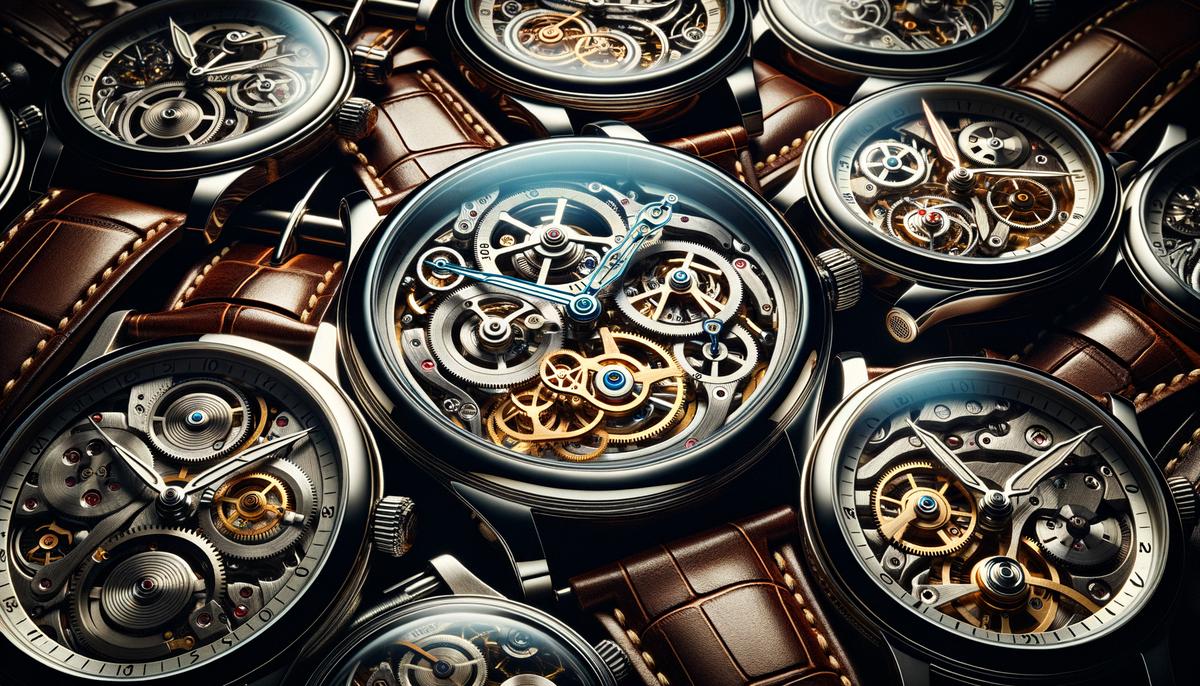
Movement Type and Performance
The difference in watch movement type is a key aspect that can significantly affect a watch’s quality, performance, and appeal. Essentially, the movement is the heart of a watch, dictating how it keeps time and its functionalities. There are primarily three types of movements found in watches: mechanical, automatic, and quartz.
Mechanical movements are the oldest type of watch movement. Crafted with an array of tiny components including gears and springs, they require manual winding by the user to operate. The craftsmanship behind mechanical watches is highly regarded due to the skilled labor and precision involved in their creation. A timepiece with a mechanical movement offers a sense of connection to the past, embodying centuries-old watchmaking traditions. The precision in assembly and the quality of materials used directly influence the watch’s durability and accuracy. However, the meticulous production process of mechanical movements often results in a higher price point, making these watches a choice investment for enthusiasts.
On the other hand, automatic movements build on the mechanical principle but add a self-winding feature. This critical enhancement allows the watch to wind itself as long as it is worn on the wrist, utilizing the natural motion of the wearer to activate the winding mechanism. The automatic movement’s complexity and inventiveness make it highly valued among collectors and watch aficionados alike. Like their manual counterparts, automatic watches are appreciated for their craftsmanship and the experience they offer but tend to be more user-friendly given their auto-winding nature. The inherent quality of an automatic watch is deeply influenced by its movement’s design and the finesse with which it’s assembled, underscoring the importance of expert craftsmanship.
Quartz movements diverge from the mechanical designs by using a battery as their power source. A quartz crystal oscillator within the movement vibrates at a nearly precise frequency when subjected to an electric charge, offering remarkable accuracy. The introduction of quartz movements in the late 20th century revolutionized the watch industry, thanks to their affordability, low maintenance, and superior precision. Despite this, timepieces featuring quartz movements often lack the artisanal allure and intricate mechanical work that draws many to watch collecting. The quality of a quartz watch can still be high but is measured more by the durability of its components and construction rather than the complexity of its engineering.
Each type of movement adds its unique charisma and value to the timepiece, directly influencing a watch’s quality. Mechanical and automatic watches often stand out for their craftsmanship and intricate detailing, appealing to those who appreciate traditional watchmaking artistry. Quartz watches, while less complex, offer unparalleled accuracy and practicality for everyday use. The choice between these movements depends largely on personal preferences regarding functionality, aesthetics, and the kind of interaction one seeks with their watch.
The refinement of a watch’s movement extends beyond mere timekeeping; it shapes the watch’s character, its reliability, and how it’s perceived in the world of horology. Whether one values the precision engineering of quartz or the artisanal beauty of mechanical movements, understanding these differences is key to appreciating the diverse qualities that watches can offer.
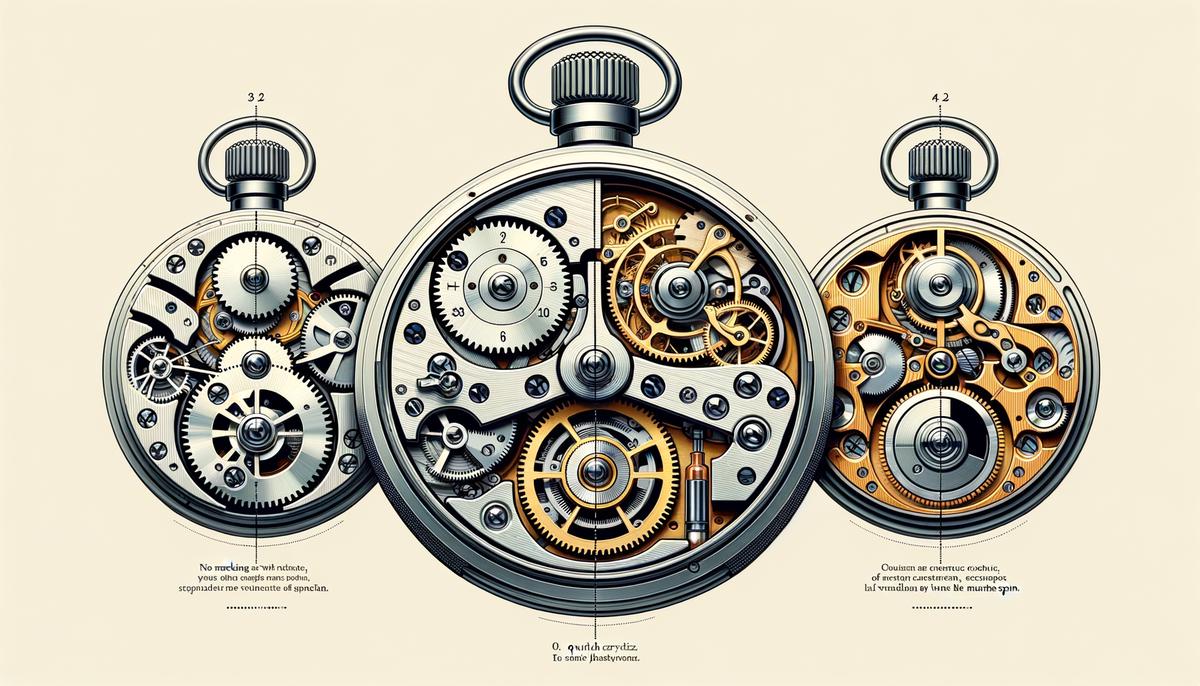
Brand Heritage and Reputation
Understanding a brand’s heritage isn’t merely about tracing its history; it’s about associating with its commitment to quality over years, sometimes centuries. Established watch brands, with a legacy stretching back generations, often use their storied past as a testament to their dedication to craftsmanship and excellence. But how does this history ensure quality in the present?
Take, for instance, a brand like Rolex or Patek Philippe. These names don’t just signify luxury; they carry an assurance of unparalleled quality. This promise is borne from a history of innovation, refinement, and meticulous attention to the crafting of each piece. The heritage of these brands speaks to a consistent track record of surpassing industry standards, achieved by embracing traditional techniques while also pioneering new ones.
A solid heritage showcases a brand’s ability to adapt without compromising on the quality that initially solidified its reputation. For example, advancements in technology have vastly changed production processes across all industries. Yet, high-end watchmakers manage to integrate these innovations seamlessly with age-old craftsmanship techniques. This blend of old and new ensures that every timepiece isn’t just a reflection of past glory but a testament to continued excellence.
Heritage also plays a crucial role in defining a brand’s identity and ethos. When you invest in a watch from a brand with a rich heritage, you are buying into an ethos of uncompromising quality. This is quality that was maintained throughout wars, economic downturns, and technological revolutions. For loyal customers and watch enthusiasts, this history is not just compelling but reassuring.
Moreover, brands with longstanding heritage invest heavily in training their watchmakers, often passing down skills that have defined the brand for generations. This human touch, guided by decades or even centuries of experience, lends an incomparable quality to each watch. It’s an assurance that every component has been handled with dedication that only accumulates with time.
Another aspect where heritage impacts quality is in the materials used. Brands with a historic commitment to excellence source only the best materials, sometimes developing proprietary alloys or sapphire crystal treatments that set their products apart. This dedication to sourcing and developing supreme materials is a tradition that newer brands might bypass in favor of cost efficiency.
Finally, survival over the decades speaks volumes. Markets fluctuate and trends come and go, but brands that have stood the test of time provide undeniable evidence of their commitment to quality. They’ve not only adapted to changes but have done so without diluting their brand’s essence.
In conclusion, the heritage of a high-quality watch brand serves as both a foundation and a promise. It’s not merely about the longevity or the historical milestones; it’s about what these elements signify—a steadfast commitment to quality. When you choose a watch from such a brand, you’re not just selecting a timepiece; you’re becoming part of a legacy that is synonymous with excellence.
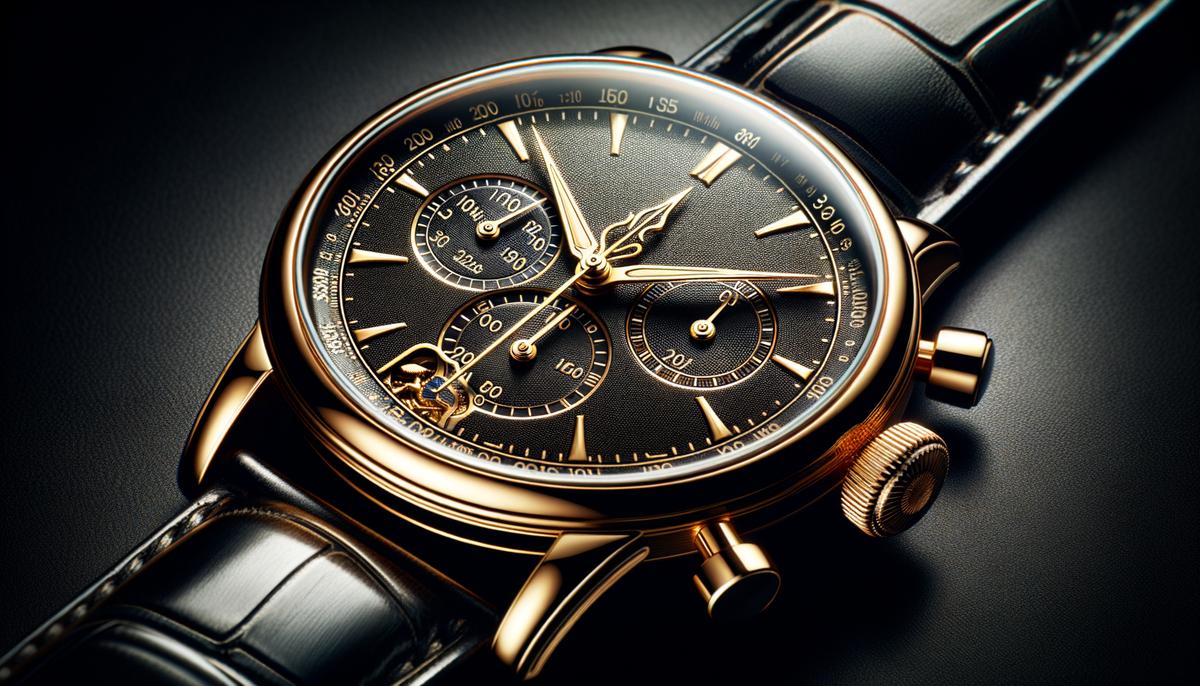
Precision and Accuracy
When discussing high-quality watches, precision and accuracy stand at the foreground, serving as the twin pillars upon which the utility and value of a timepiece rest. These concepts, often used interchangeably but serving distinctly different roles, ensure that a watch not only performs its fundamental task—to tell time—but does so with reliable consistency and exactitude.
Precision in watchmaking pertains to the consistent performance of the watch movement over time. For a high-quality watch, it means that whether it measures the passing of minutes on a lazy Sunday afternoon or counts down the seconds in a high-stakes scenario, it does so with unwavering reliability. This consistency is a testament to the meticulous design and craftsmanship invested into the watch’s inner workings. It highlights the mastery with which the intricate components of the movement—be they automatic, mechanical, or quartz—are assembled to work in seamless harmony.
On the other hand, accuracy is about the watch’s ability to reflect the true time. A watch might be precise in its operations, keeping steady intervals, yet if it runs five minutes fast or slow, it lacks accuracy. High-quality watches aim for the pinnacle of accuracy, sometimes achieving deviations as minimal as a few seconds a year, far surpassing the performance of less meticulously crafted timepieces. This remarkable feat is achieved through fine-tuning the movement and often, in more traditional pieces, by adjusting them in various positions and temperatures to ensure minimal deviation from the true time under any conditions.
The overarching reason why precision and accuracy are non-negotiable in high-quality watches boils down to reliability—the assurance that when you glance at your wrist, the time displayed is as close to perfect as human hands (and innovation) can achieve. This reliability extends beyond mere function; it embodies a trust between the wearer and their timepiece, a bond that grows stronger with each punctual arrival and timely decision.
For individuals in professions where time is of essence—that moment when an accurate second hand can mean the difference between normalcy and catastrophe—this trust transforms into a lifeline. Pilots navigating through time zones, doctors timing dosages or surgical strokes, or sportsmen measuring performance during training rely not on just any watch, but on one where precision and accuracy are givens.
Moreover, the preoccupation with these qualities transcends practicality for collectors and enthusiasts. To them, a timepiece’s precision and accuracy are not merely technical achievements but are symbolic of the zenith of human ingenuity—where art meets science in the pursuit of perfection.
In positioning themselves above their counterparts, high-quality watch brands commit not only to the honor of their heritage or the allure of their designs but significantly, to the relentless pursuit of accuracy and precision in every tick. This commitment underscores their understanding that in the realm of timekeeping, even a second holds weight, and thus no detail is too small to overlook in crafting instruments that excel in both measure and message.
In a world governed by the unforgiving tick-tock of time, where moments pass uncredited, high-quality watches do more than keep pace. They ensure that every second counts, not just in measurement but in meaning—an enduring commitment set in the heart of horology.
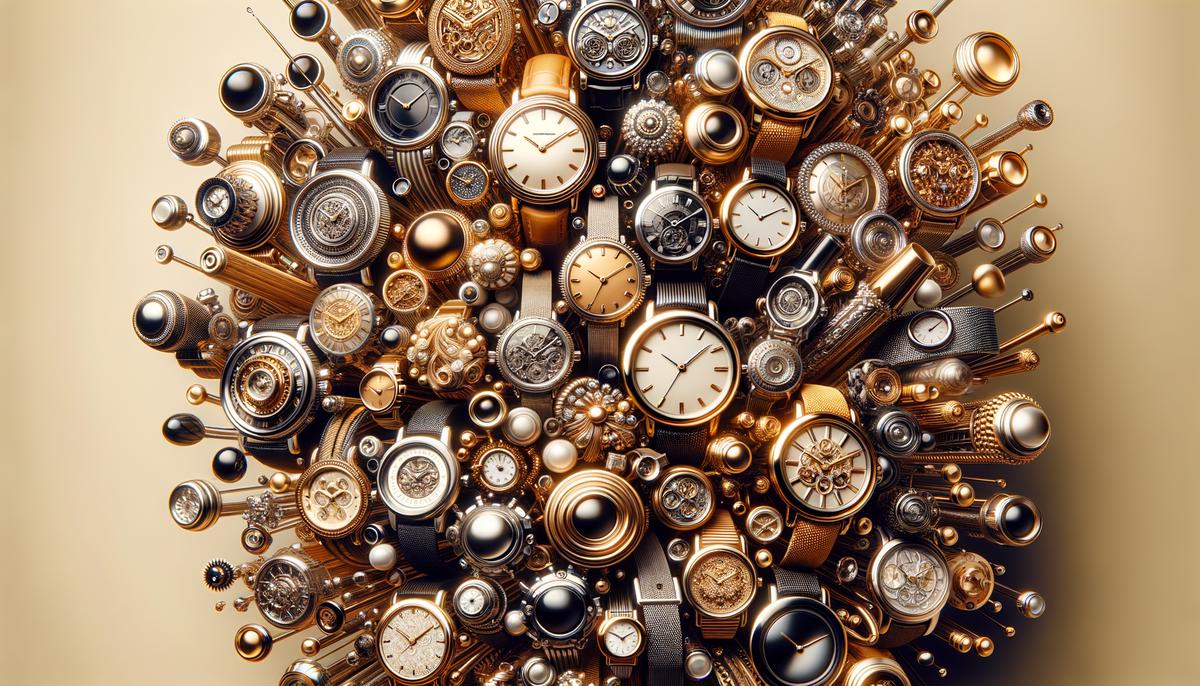
After-Sale Services and Warranty
After a high-quality watch joins a collector’s personal trove or adorns an enthusiast’s wrist, its journey toward remaining a timeless piece only begins. Critical to maintaining, not only its functionality but also its esteem and monetary value, are the after-sale services offered by the elite watchmakers. These services, often overlooked at the point of purchase, play a pivotal role in enhancing the value of high-quality watches.
One of the most crucial after-sale services offered is regular maintenance and tuning. Just as a high-performance vehicle requires regular check-ups, luxury watches also demand professional servicing. This ensures the intricate gears and mechanical parts inside continue working with precision. High-quality watches are pieces of sophisticated engineering, and over time, even the slightest wear inside can affect performance. Manufacturers recommend servicing every 3-5 years for mechanical and automatic watches, ensuring they run accurately and continue to exhibit the outstanding craftsmanship they were made with.
Repair services complement maintenance but focus on fixing unexpected issues, such as damage from accidents or part failures. Brands that stand behind their products often have specialized facilities where expert technicians undertake such precise work. The ability to restore a watch to its original glory, irrespective of the problem’s complexity, demonstrates a brand’s commitment to its products and customers. This not only reassures the owner but affirms the watch’s enduring value.
Upgradation is another fascinating aspect of after-sale service. Certain brands offer customization and upgrade options, like changing the strap materials or upgrading the watch case. This allows watch owners to personalize their timepieces further or even enhance their functionalities as newer innovations become available. Such ongoing customization options keep the watch relevant and fashionable throughout its life.
Certification renewal comes into play for pieces that boast specific standards, such as water resistance or anti-magnetic capabilities. Over time, seals weaken, and protections may diminish. After-sale services include checks and renewals to ensure that certified watches continue to meet the specifications the brand initially promised, reflecting continuous value adherence.
Knowledge and consultation are valuable services provided by brand representatives and technicians, enabling owners to understand their watch’s nuances better. Whether it’s about operation intricacies, care tips, or the history of a specific model, this adds layers of appreciation to the ownership experience and further ingrains the brand within the owners’ esteem.
Lastly, warranty services guarantee that any early faults are rectified at no additional cost to the buyer, instilling confidence in the purchase. Extended warranties or options to purchase them also signify the brand’s faith in its products’ longevity. A commitment like this reassures buyers of their investment’s worth over time.
In summary, after-sale services form an indispensable part of the luxury watch ownership experience. From extending the lifetime of the watch, preserving its functionality and appearance, offering personalization, ensuring standards are upheld, to enriching owners’ understanding and appreciation of their timepieces – these services magnify the value of high-quality watches far beyond their price tag. It’s evident then that post-purchase care is not merely an extension of customer service but a cornerstone in elevating a high-quality watch from a mere instrument of timekeeping to a legacy to be cherished and passed on.
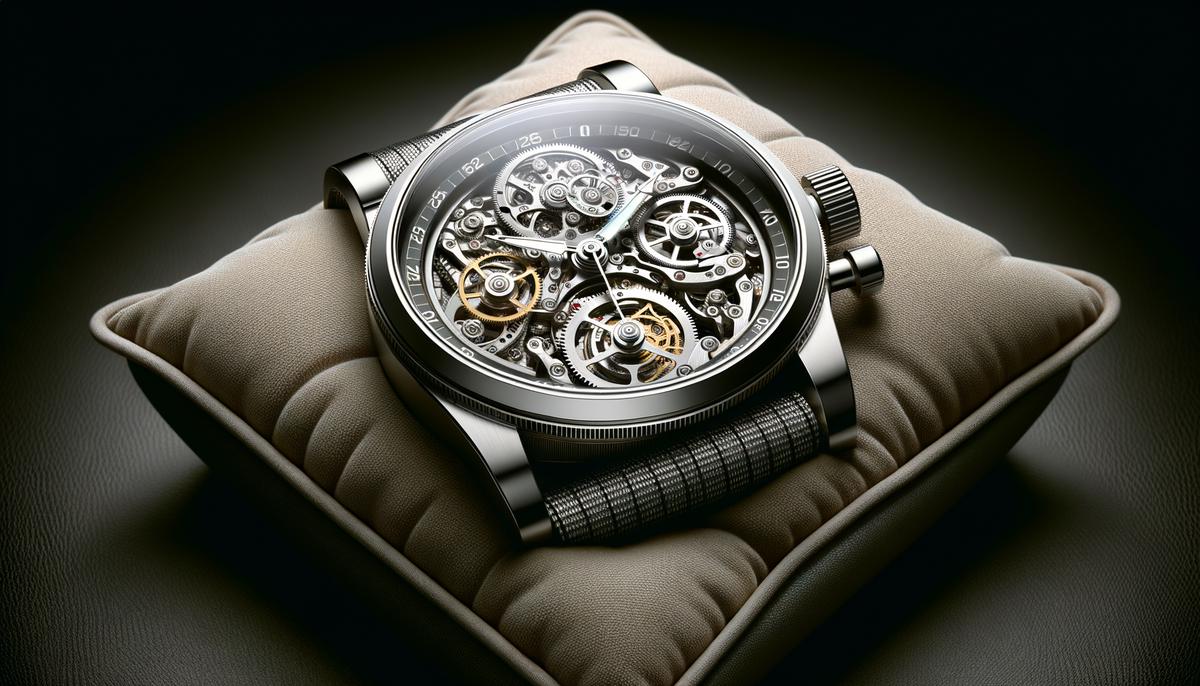
The essence of high-quality watches transcends mere timekeeping; it embodies a legacy of unparalleled craftsmanship and dedication to excellence. Through their sophisticated movements, superior materials, storied brands, and unwavering precision, these timepieces represent not just moments in time but milestones in horological history. As we consider the value added by after-sale services and warranties, it becomes clear that owning such a watch is not merely about having a luxury item but about investing in a piece of enduring legacy that resonates with both past achievements and future aspirations.
Leave a Reply